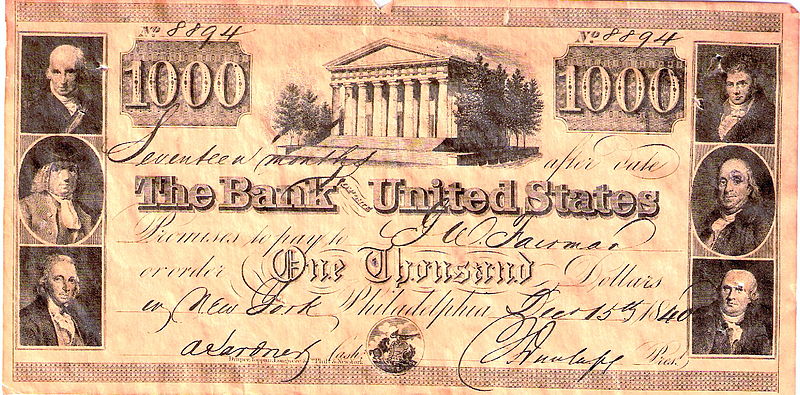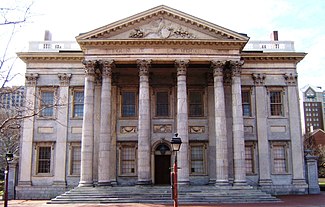Proposed by Alexander Hamilton, the Bank of the United States was established in 1791 to serve as a repository for federal funds and as the government’s fiscal agent. Although it was well managed and profitable, critics charged that the First Bank’s fiscal caution was constraining economic development, and its charter was not renewed in 1811. The Second Bank was formed five years later, bringing renewed controversy despite the U.S. Supreme Court’s support of its power. President Andrew Jackson removed all federal funds from the bank after his reelection in 1832, and it ceased operations as a national institution after its charter expired in 1836.
 This decision did not settle the controversy, however. State banks and western entrepreneurs continued to criticize the Bank as an instrument of federal control and of eastern commercial interests. In 1832, Senator Henry Clay, a longtime supporter of the Bank, was running for president against Andrew Jackson, who was up for reelection. Clay persuaded the Bank’s president, Nicholas Biddle, to apply early for rechartering, thus injecting the issue into the campaign. Congress approved the renewal, but Jackson (who distrusted banks) vetoed it, campaigned on the issue, and took his electoral victory as a mandate for action. Starting in 1833, he removed all federal funds from the Bank. When its charter expired in 1836, the Second Bank ended its operations as a national institution. It was reestablished as a commercial bank under the laws of Pennsylvania, where it continued to operate until its failure in 1841.
This decision did not settle the controversy, however. State banks and western entrepreneurs continued to criticize the Bank as an instrument of federal control and of eastern commercial interests. In 1832, Senator Henry Clay, a longtime supporter of the Bank, was running for president against Andrew Jackson, who was up for reelection. Clay persuaded the Bank’s president, Nicholas Biddle, to apply early for rechartering, thus injecting the issue into the campaign. Congress approved the renewal, but Jackson (who distrusted banks) vetoed it, campaigned on the issue, and took his electoral victory as a mandate for action. Starting in 1833, he removed all federal funds from the Bank. When its charter expired in 1836, the Second Bank ended its operations as a national institution. It was reestablished as a commercial bank under the laws of Pennsylvania, where it continued to operate until its failure in 1841.

